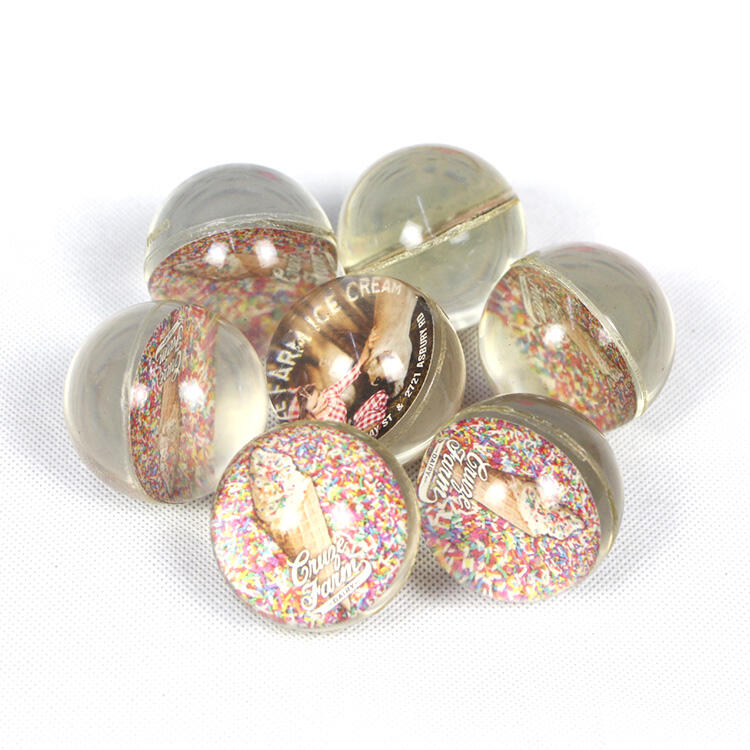The Science Behind Rubber Toys in Positive Reinforcement Training
How Rubber Toys Support Positive Reinforcement and Behavior Shaping
Rubber toys work really well for training because they set up these consistent patterns that dogs learn to expect. The tough material lets pups chew away without damage, something trainers often use while teaching commands such as "drop it" or "leave it." What happens is pretty interesting actually—the dog starts associating the toy itself with getting what they want. According to research published in K9 Journal last year, about eight out of ten certified trainers have noticed their dogs pick up commands much quicker when working with rubber toys rather than just giving them belly rubs or treats after the fact.
Classical and Operant Conditioning Principles in Toy-Based Training
When dogs start linking their rubber toy time with good things happening, we see those Pavlovian reactions kick in. The squeaky sound from these toys acts like a reward signal after repeated plays, basically what psychologists call classical conditioning. Then there's the other side where dogs will keep doing certain toy-related stuff, like bringing back the toy they just played with, because they know it means more fun is coming. That's operant conditioning at work. Now throw in those rubber toys that give out treats, and suddenly we have something even more powerful. These toys mix regular reward patterns with physical sensations, making dogs want to keep playing the same way over and over again. Pet owners notice this consistency in behavior pretty quickly once their dog gets hooked on one of these treat dispensers.
Activating Reward Pathways: Why Dogs Respond Strongly to Rubber Toys
Canine fMRI studies reveal that rubber toy interactions trigger 40% stronger dopamine release in the nucleus accumbens compared to cloth toys. This heightened response stems from three factors:
- Tactile resistance mimicking prey anatomy
- Auditory feedback from squeakers or elastic deformation
- Predictable rebound patterns during fetch
These multi-sensory stimuli align with dogs' evolutionary hunting instincts, producing neurological rewards similar to those from successful food acquisition.
Comparing Rubber Toys to Food Rewards in Reinforcement Efficacy
While high-value treats achieve 92% initial command compliance, rubber toys maintain 73% retention after six months—compared to 51% for food-based systems (Tufts University Canine Cognition Center, 2023). The key advantage lies in rubber toys serving as both primary reward and training prop, avoiding the reward dilution common in treat-dependent protocols.
Rubber vs. Other Toy Types: Behavioral Impact and Training Suitability
Performance Comparison: Rubber, Squeaky, and Puzzle Toys in Training
When it comes to basic obedience training, rubber toys tend to work better than those squeaky ones or complicated puzzles because they last longer and move in ways dogs can predict, which helps them remember what they're supposed to do. The loud squeakers sometimes make dogs go wild with their hunting instincts instead of paying attention to commands. Puzzle toys are great too, but most puppies aren't ready for all that thinking until they've mastered some basics first. Research indicates that rubber toys keep dogs focused about 41% more often during repeated exercises probably because of how they feel in the mouth and the way they bounce just enough without getting too crazy. Plus, these rubber options are generally safe if chewed up accidentally since they don't contain harmful chemicals like many stuffed animals do, which makes parents sleep better at night knowing their furry friends won't get sick from chewing on something dangerous.
Cognitive Engagement Through Treat-Dispensing Rubber Toys
Rubber toys that dispense treats combine the fun of figuring things out with getting rewards, which gets those parts of the brain working together. The front part handles focusing on tasks while another area lights up when something rewarding happens. These rubber toys aren't just sitting there like regular puzzles though. They have hollow centers inside so people can change how hard it is to get treats out. Studies indicate this tweak keeps pets interested longer during playtime, maybe around 28% more time spent playing actively. That flexibility really helps train dogs to wait for their rewards, making commands like stay or leave it much easier to teach over time.
Influence of Toy Type on Activity Levels and Focus During Training
Rubber toys that stretch well, like those fetch rings many dogs love, actually keep them active aerobically about 22 percent longer than stiff nylon options. This extended playtime helps dogs settle down after exercise, which makes it easier for them to focus on training later. On the flip side, those loud squeaky toys tend to raise stress hormones by around 15% in hyperactive breeds when they're playing fetch, and this extra stress can mess with how well they remember commands afterward. Most vets suggest going for rubber toys with some texture during leash training sessions because the surface helps dogs learn proper mouth control. Smooth plastic toys just don't offer the same resistance that teaches puppies not to bite too hard.
Practical Applications in Obedience and Recall Training
Using Rubber Toys for Recall and Basic Command Training (Sit, Stay, Come)
More and more professional dog trainers are turning to rubber toys for their obedience work these days. These toys hold up really well during those repetitive sit-stay-come exercises, serving as both something to get the dogs interested in and a treat at the same time. Take a rubber tug ring for instance—it works great for keeping dogs in place during stay commands. And those rough-textured fetch toys? They're fantastic for getting dogs to come back when called. The thing is, compared with other kinds of training aids out there, rubber toys just stand up better to all the chewing and throwing around that happens during regular training sessions.
| Toy Type | Durability | Engagement | Best For |
|---|---|---|---|
| Rubber | High | Interactive | Obedience Drills |
| Rope | Moderate | Tugging | Play Sessions |
| Plush | Low | Comfort | Stress Relief |
This tactile advantage helps owners transition away from food rewards while maintaining reliable reinforcement.
Case Study: Improving ‘Come’ Command Reliability With Rubber Fetch Toys
A six-month canine behavior study followed 40 dogs with inconsistent recall. When handlers used rubber fetch toys as the sole reinforcement, 89% achieved reliable outdoor “come” responses within eight weeks. The toys’ unpredictable bounce increased attention, with 72% of dogs responding faster than with treat-only methods.
Data Insight: 78% Improvement in Command Response With Consistent Toy Rewards (ASPCA, 2022)
The 2022 ASPCA Canine Training Survey found dogs rewarded with rubber toys retained commands 22% longer than those given food treats. Sessions using Kong-style toys showed 78% faster mastery of multi-step commands (“sit-stay-come”), likely due to the combined mental stimulation and physical exertion inherent in toy-based training.
Mental Stimulation and Emotional Bonding Through Interactive Play
Cognitive Enrichment: How Rubber Toys Prevent Boredom and Destructive Behavior
Rubber toys help dogs think while they play, working those problem-solving muscles in the process. The way these toys bounce unpredictably and have all sorts of textures keeps pups focused for longer periods. According to a study from last year, this kind of stimulation cuts down on annoying behaviors caused by boredom, like when dogs bark nonstop or chew up furniture around the house. The numbers? Around 63% reduction. And then there are those special rubber toys that dispense treats as well. These ones keep dogs entertained about 40% longer than regular toys. They encourage persistence too, since the dog has to work at getting the treat out, which taps into their natural instinct to hunt and find food.
Strengthening the Pet-Owner Bond Through Structured Play Sessions
Playing with rubber toys creates those special moments that strengthen the bond between pets and their people. Some vets have found that when owners do short 10-minute sessions mixing play with training commands, where the pet gets a toy as a reward for following directions, it actually makes dogs look at their humans more consistently around 31% of the time. This kind of back and forth isn't just fun for the animal either. It works similarly to how babies connect with caregivers through repeated positive interactions. The predictability helps build trust over time, much like when parents respond reliably to infant needs. Many pet owners notice these small but meaningful changes in their animals' behavior after incorporating such routines into daily life.
Balancing Toy Reliance With Verbal Cue Retention in Long-Term Training
Rubber toys definitely help dogs learn commands faster at first, but most trainers suggest slowly reducing these physical treats after about three weeks so pets don't get too reliant on them. Start with giving toys about 75% of the time during week one, then cut back to around half by week two, and maybe just a quarter by week three while adding lots of verbal praise instead. Some folks find it works well to keep rubber toys as special nighttime rewards once in a while. This keeps their motivation going without making them ignore those subtle body language signals we all rely on when training our furry friends.
FAQ
What are the benefits of using rubber toys in dog training?
Rubber toys in dog training provide multi-sensory stimuli that align with dogs' natural hunting instincts and trigger stronger dopamine release, aiding in behavior shaping and command retention.
How do rubber toys compare to food rewards?
Rubber toys offer 73% retention after six months, compared to 51% for food rewards, avoiding reward dilution and serving as both a primary reward and training prop.
Are rubber toys safe for dogs?
Rubber toys are generally safe, as they don't contain harmful chemicals like some stuffed toys, reducing risks of health issues from accidental chewing.
How do rubber toys enhance mental stimulation for dogs?
The unpredictable bounce and variety of textures in rubber toys keep dogs engaged and focused, preventing boredom and promoting cognitive enrichment.

